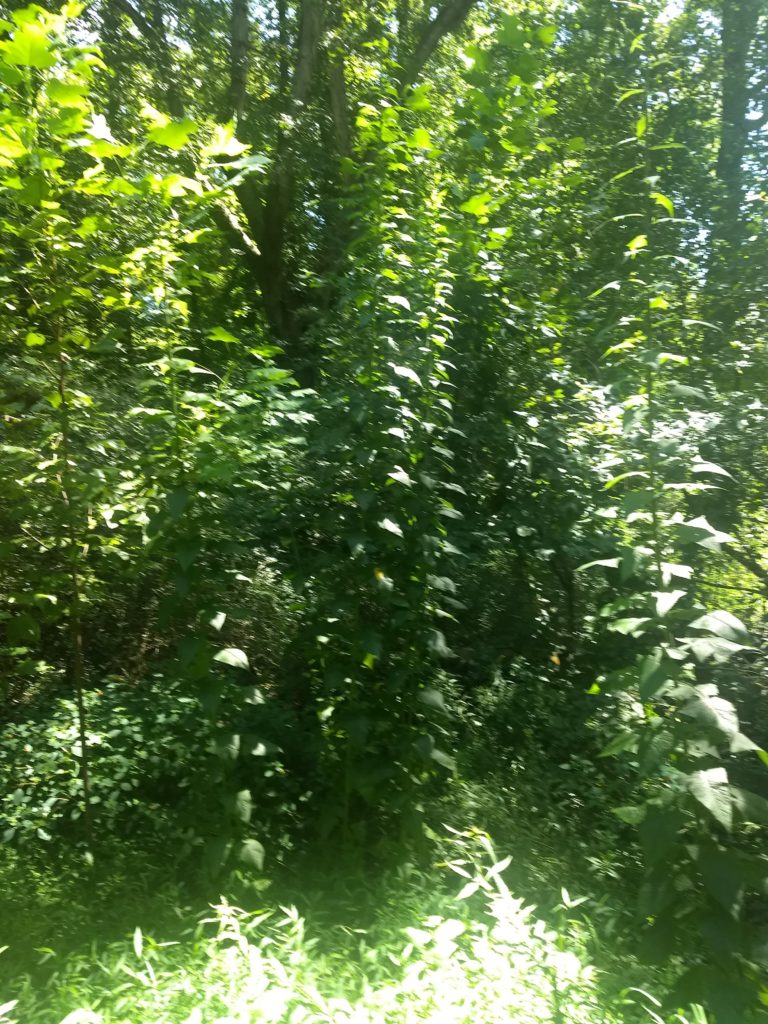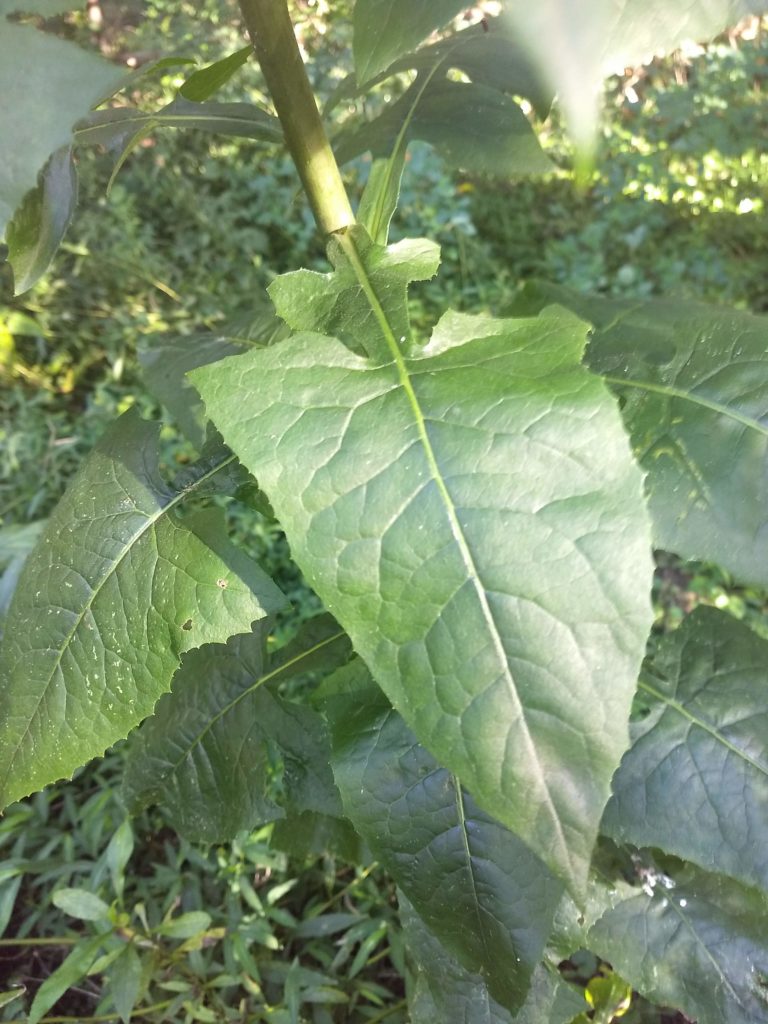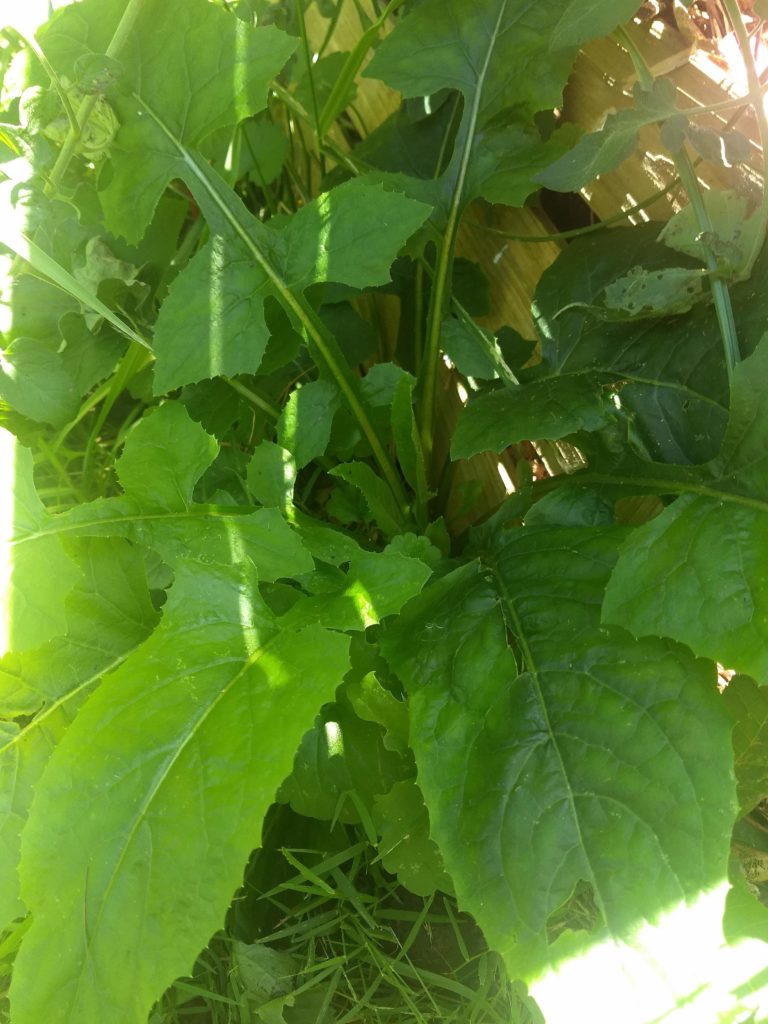‘Monster’ by the Woods: Wild Lettuce
go.ncsu.edu/readext?623035
en Español / em Português
El inglés es el idioma de control de esta página. En la medida en que haya algún conflicto entre la traducción al inglés y la traducción, el inglés prevalece.
Al hacer clic en el enlace de traducción se activa un servicio de traducción gratuito para convertir la página al español. Al igual que con cualquier traducción por Internet, la conversión no es sensible al contexto y puede que no traduzca el texto en su significado original. NC State Extension no garantiza la exactitud del texto traducido. Por favor, tenga en cuenta que algunas aplicaciones y/o servicios pueden no funcionar como se espera cuando se traducen.
Português
Inglês é o idioma de controle desta página. Na medida que haja algum conflito entre o texto original em Inglês e a tradução, o Inglês prevalece.
Ao clicar no link de tradução, um serviço gratuito de tradução será ativado para converter a página para o Português. Como em qualquer tradução pela internet, a conversão não é sensivel ao contexto e pode não ocorrer a tradução para o significado orginal. O serviço de Extensão da Carolina do Norte (NC State Extension) não garante a exatidão do texto traduzido. Por favor, observe que algumas funções ou serviços podem não funcionar como esperado após a tradução.
English
English is the controlling language of this page. To the extent there is any conflict between the English text and the translation, English controls.
Clicking on the translation link activates a free translation service to convert the page to Spanish. As with any Internet translation, the conversion is not context-sensitive and may not translate the text to its original meaning. NC State Extension does not guarantee the accuracy of the translated text. Please note that some applications and/or services may not function as expected when translated.
Collapse ▲This week I would like to share questions that have been asked recently at the N.C. Cooperative Extension, Caldwell County Center. I hope you find these questions and answers helpful. If you have specific questions not answered here, please contact the office directly.
Question: There are some monster weeds at the back of my yard by the woods. The tallest looks 12-15 feet high. All are a single stalk, now beginning to form multiple tiny flower buds at the top. Attached is a photo showing the full height, a close shot of the leaf on the stalk, a photo of a leaf spread out on the ground, and a photo of a 12-inch version of the same plant.

Wild lettuce can grow to heights of 12 feet or more. It is typically found in partly shaded locations. (Guy Lucas)
Answer: This is a wild lettuce, probably the species “Lactuca canadensis”. Last year, I saw these growing at the Broyhill Walking Park (a/k/a the duck pond). They were growing in the woods beside the bathroom/pavilion. This is a biennial plant. The first year biennial plant grows as a rosette, low to the ground. Then the following year, the plant “stretches” and gets very tall, flowers, produces a bunch of small seeds, and then the plant dies. Most biennial plants produce small seeds that are attached to fluffy white hairs. The hairs act as “parachutes” and allow the seeds to be carried for miles by the wind. Botanists call these white fluffy hairs “pappus”. This is from the Latin word meaning “old man”.

Close-up of the two-year-old plant that has “stretched” or more correctly “bolted”. It will produce seed the second and final year of its life. (Guy Lucas)
Wild lettuce is actually cultivated in European countries. Another name for wild lettuce is opium lettuce. When damaged, the plant exudes a milky latex substance. It was once prepared as an opium by physicians in the 1800’s and early 1900’s. Although the prepared latex resin from the plant is purported to have some of the same properties as opium, the effects are much more mild, and it is not chemically related to any of the opiate drugs. Wild lettuce can still be purchased from herb companies.
Question: I have a large lawn and I want to establish zoysiagrass. Can I grow zoysiagrass from seed?
Answer: Yes, it is possible to establish a zoysiagrass lawn from seed. Zoysiagrass spreads by stolons and rhizomes, but it is easier to keep out of flowerbeds than bermudagrass. Zoysiagrass produces a very dense, wear-tolerant lawn that grows well in full sun and light shade. Because the leaves are stiff, mowing can be difficult unless the mower blades are sharp. Zoysiagrass is very drought resistant. It rarely needs irrigation to survive in North Carolina. Zoysiagrass is a warm-season grass, so it will go dormant in the winter and turn a golden yellow color.
At one time, zoysiagrass had to be planted vegetatively. This is called sprigging. Starting a lawn this way often took up to three years for total coverage. Now, there are a few cultivars of zoysiagrass, such as Compadre, Zenith, Zen 100, and Zen 300CS, that can be seeded. Under ideal conditions, it is possible to establish a seeded zoysiagrass lawn in one season.
The biggest challenge with establishing a zoysiagrass lawn, by seed or sprigging, is weeds. The University of Arkansas has a very extensive publication on establishing zoysiagrass from seed. When establishing a zoysiagrass lawn from seed, expect to pay $900 to $1,500 per acre. This might seem expensive. However, when compared to establishing a lawn from sod ($15,000), the seed seems much less expensive.
Soil temperatures need to be warm for zoysia to germinate. Early June is the ideal time to sow zoysiagrass in Caldwell County. I would sow 1.5 pounds of seed per 1,000 square feet. The lawn should be watered so the grass seedlings do not dry out. Be ready to apply a preemergent herbicide once the zoysia is big enough to avoid being damaged by the treatment.
For answers to your agricultural questions, call the N.C. Cooperative Extension, Caldwell County Center at 828-757-1290, or visit us online anytime.





